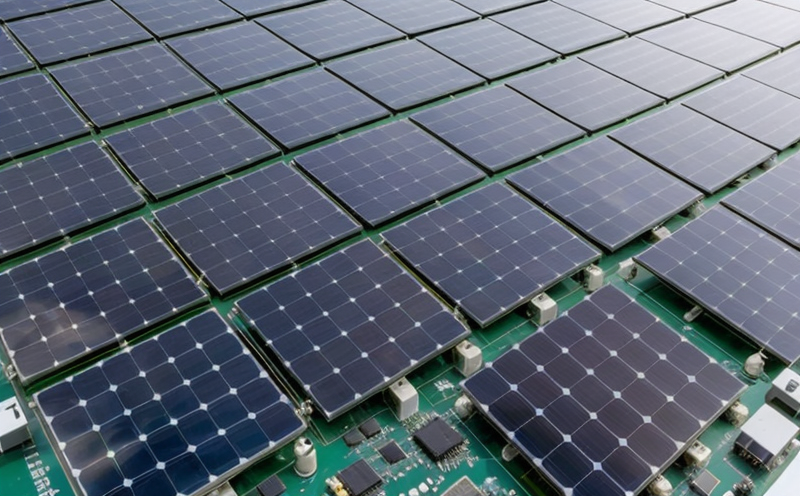IEC 61727 PV System Utility Interface Testing
The International Electrotechnical Commission (IEC) standard IEC 61727 sets out the requirements for photovoltaic (PV) systems interfacing with utility grids. This testing ensures that solar power systems can safely and reliably connect to the electricity grid, adhering to international best practices.
Our laboratory specializes in this critical service, offering a comprehensive suite of tests designed to validate compliance with IEC 61727. These tests are essential for manufacturers, installers, and utilities to ensure that PV systems meet stringent safety standards before deployment.
The testing process involves several key components: system integration, harmonic distortion, power quality, and fault ride-through capabilities. Each aspect is crucial in ensuring that the solar system can operate safely alongside existing utility infrastructure without causing disturbances or hazards.
System integration tests assess how a PV system interfaces with the grid, checking for compatibility and interoperability. Harmonic distortion tests ensure that the system does not introduce unacceptable levels of harmonic distortions into the grid. Power quality evaluations focus on the stability and reliability of power supplied by the PV system during both normal and fault conditions.
Fault ride-through capabilities are particularly important, as they determine whether a solar system can continue operating during disturbances such as voltage sags or interruptions. This capability is vital for maintaining grid stability and preventing cascading failures that could affect large areas of the network.
The testing process begins with detailed analysis of the PV system design to identify potential issues early in the development stage. From there, we proceed with rigorous testing using state-of-the-art equipment designed specifically for these tests. Our team of experts ensures that each test is conducted meticulously and reported accurately according to IEC 61727 guidelines.
By adhering strictly to this standard, our laboratory guarantees that all tested PV systems meet the highest international safety and performance standards. This not only enhances consumer confidence but also supports regulatory compliance for manufacturers and installers.
The importance of IEC 61727 testing cannot be overstated in today’s rapidly evolving renewable energy landscape. As more countries adopt solar power as a key component of their energy mix, ensuring safety and reliability becomes paramount. Our laboratory plays an integral role in this process, providing critical insights that help drive innovation and sustainability within the industry.
Our services extend beyond just testing; we also offer technical support and training to help stakeholders understand the nuances of IEC 61727 compliance. By doing so, we empower them to make informed decisions that contribute positively towards broader environmental goals.
Industry Applications
The application of IEC 61727 PV System Utility Interface Testing spans multiple sectors including solar energy production, grid integration, and renewable technology development. This testing is particularly relevant for:
- Solar panel manufacturers ensuring their products can safely connect to utility grids.
- Utility companies validating the compatibility of new installations with existing infrastructure.
- R&D departments exploring advanced PV technologies that must meet stringent safety standards.
- Renewable energy projects seeking certification for grid connection.
In each of these areas, IEC 61727 testing provides assurance that the PV systems being deployed are not only safe but also capable of operating efficiently within the broader electrical network. This is crucial in promoting the widespread adoption of solar energy as part of sustainable development strategies worldwide.
Customer Impact and Satisfaction
- Enhanced Safety: By adhering to IEC 61727, we ensure that PV systems are safe for both users and the environment.
- Regulatory Compliance: Our testing helps clients meet stringent regulatory requirements, avoiding costly delays or penalties.
- Better Consumer Confidence: Meeting these standards reassures customers about the reliability and safety of renewable energy solutions.
- Innovation Support: With rigorous testing backing their designs, manufacturers can confidently introduce new products into the market.
Environmental and Sustainability Contributions
The IEC 61727 PV System Utility Interface Testing aligns closely with broader sustainability goals by promoting safe, reliable, and efficient solar power generation. By ensuring that PV systems meet the highest standards of safety and performance, we contribute to:
- Reducing emissions from traditional fossil fuel sources.
- Promoting responsible energy use through renewable technologies.
- Supporting global efforts towards climate change mitigation.
- Fostering innovation in sustainable energy solutions.





